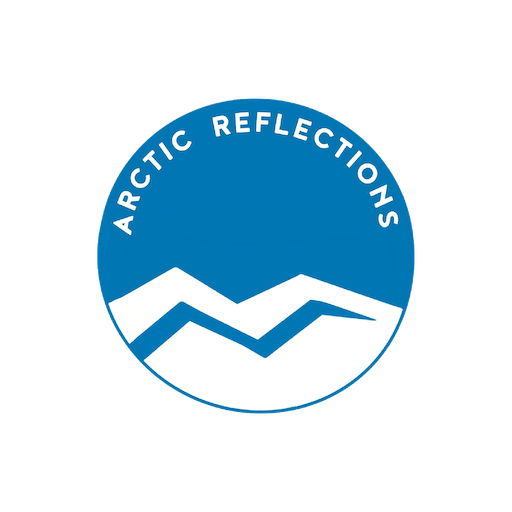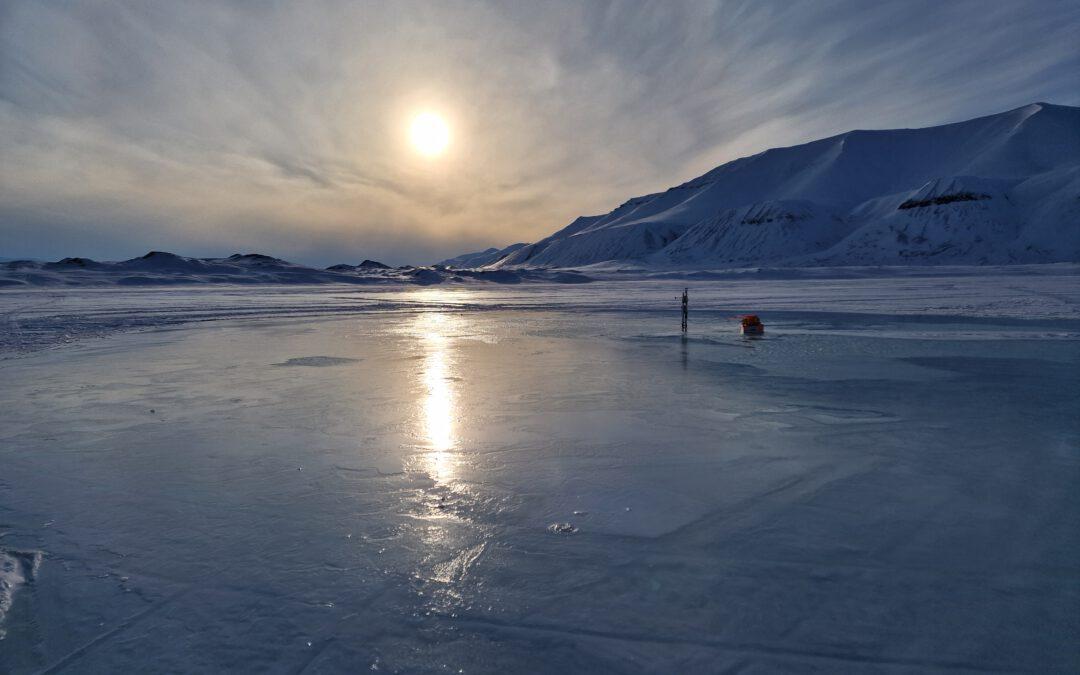Arrival
Mid-April, we arrived in Svalbard, for our field test at the Vallunden lake near Svea, an old coal mine. This is part of our collaboration with UNIS (The University Centre in Svalbard) and Delft University. The joint team consisted of Aleksey Shestov of UNIS, Hayo Hendrikse, Tim Hammer, Laura van Dijke of Delft University, and Tom and Fonger.
The field experiment aimed to gather precise and accurate data to rigorously validate the potential impact of ice thickening.
When we arrived, we immediately saw that the fjord near Longyearbyen, the capital, was frozen for a large part (which usually doesn’t happen anymore), and we considered this as a good sign. We were very lucky with the weather, with temperatures consistently between -12 and -20 degrees, which were cold enough for the pumped water to freeze reasonably fast.
We conducted some final equipment tests, last-minute shopping, and necessary safety training, and then we packed the sleds and were good to go!

Our equipment on a sled
At Svea
Svea is an old coal mining site, which has been cleared and has some barracks left for researchers. After a stunning 70 km snowmobile ride, we arrive in a fierce wind blowing through the Van Mijenfjorden. In the evening, we went to Vallunden Lake, where the experiments were to take place. Tim and Aleksey had already installed part of the measurement equipment earlier, and we finished this work, ensuring that the measurement equipment could float, so it could be recovered safely once the thickening was over. We also installed our timelapse camera.
The following days were long, intensive, and full of measurements. At the reference site and our two pumping sites, we took many ice cores each day and cut them into 10cm thick sections to measure temperature, density, and salinity profiles. This approach enables us to see when the salt will form brine channels through the original ice and return to the ocean.
It was great to be part of such a dedicated crew, with a thorough research plan, guided by the very experienced scientists of UNIS and Delft University.
After each pumping session, next to the ice coring, we followed the temperature profile of the ice over time, making use of the thermistor chains we installed in the ice. We will be able to continuously monitor the temperature profile and ice thickness, also during the melting season. Next to this, we have installed a weather station, and two net radiation meters: one at the reference site and one at a pumping site. They are designed to measure incoming and outgoing radiation, both longwave and shortwave. With this, we can track the effect of pumping on e.g. the Albedo effect, in real-time!
We now have one pumping site where we can do a longer pumping session, and then let the ice recover and measure salinity for the rest of the week, and one site where we pump over several days for a shorter period. Additionally, we have another site for shorter experiments, e.g. to test the erosion of the ice coming from the water flowing over the ice. The pumps, which are proven technology and are being used to create ice roads regularly, have a flow rate of 3500 liters/minute, which finds its way through the snow to saturate it. Because the snow layer is quite thick, we need to be careful not to create a water/slush layer that is too thick.
After a week full of measurements, hard work, and even some journalists coming by to see what we are up to, it is time to go back to Longyearbyen. We ended with another stunning ride by snowmobile, and then it was time to have a goodbye dinner!

Thermistor chain graph showing real-time ice and snow thickness at field test location
What’s next?
In the coming months, we will gather further data for a thorough analysis of ice growth and melt, to validate that the thickened ice lasts as long as expected. The gathered data will be made publicly available to the scientific community. If proven successful, this can be the first step towards the use of Arctic Ice Thickening to preserve local natural habitats and sea ice as a reflective surface.
Thank you to everyone involved for a great field campaign! After we got home, we also realized we were really lucky with the weather, because two days after we left, the temperature went up to -1°C (30°F) !
Pumping Arctic sea water onto the ice!

